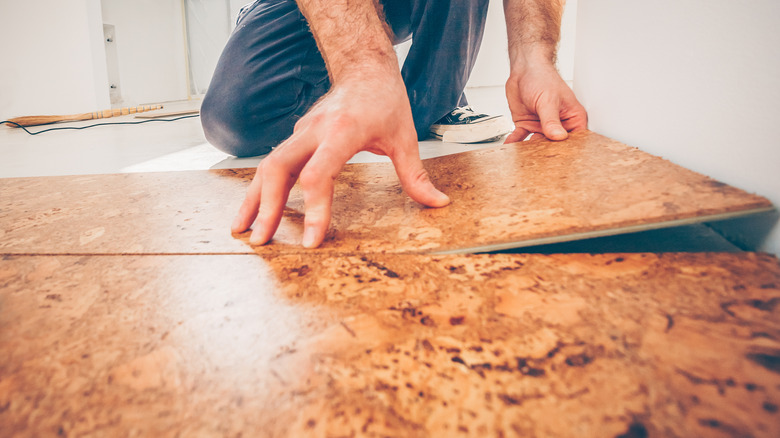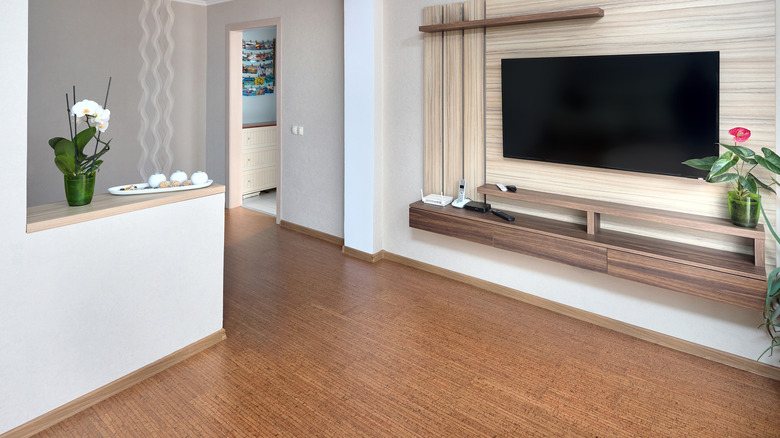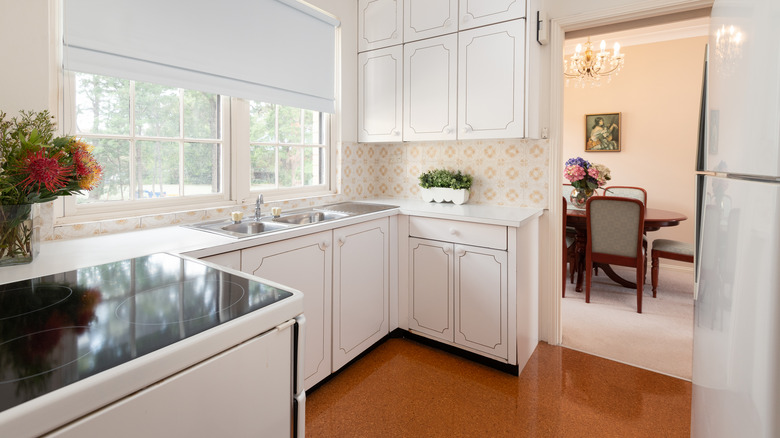Is Cork Flooring The Right Choice For Your Home?
Cork flooring saw a boom in popularity in the 1940s and 1950s, but according to mid-century design experts at Atomic Ranch, this soft and sustainable flooring dates back to the 1870s. After WWII, newly built ranch homes and bungalows were frequently decked out in this comfortable and affordable flooring. Cork floors fell out of fashion in the latter half of the 20th century, but like many other retro design elements, they're seeing a resurgence in 2022, via iNews. Cork floors can be a unique and timeless flooring option today, despite their wavering history.
However, there are certainly some pros and cons to consider before installing cork flooring. Despite its many benefits, cork is not a low-maintenance floor type, so it's essential to consider it carefully before installing it in your home. If you are well settled in your residence, have few or no pets, and aren't at risk for flooding or high humidity, cork flooring could be a fantastic design choice that you'll love for many years.
What you'll love about cork flooring
If you're looking for flooring that is cleaner than carpet, sustainable, affordable, and easy to DIY, cork may be just the thing. Homeowners today love their cork flooring for its warmth, comfort, and simplistic design. Cork floors have a slight "bounce" and soft texture, which makes them feel very comfortable underfoot — perfect for standing in the kitchen. At the same time, cork is much easier to clean and maintain than carpets. Cork is the ideal flooring for softening a space and suppressing loud noises, according to flooring retailer, Cancork. Cork not only absorbs sounds, but it also insulates a room from extreme temperatures.
Cork floors are an excellent option for homeowners who want a good investment return because they provide a sustainable and classy aesthetic. Like other natural wood flooring designs, cork is timeless. Cork flooring is easy to pair with many types of décor because it is neutral like wood, so any future homebuyers will feel confident purchasing the space.
Caring for cork flooring
According to the U.S. Department of the Interior, the Library of Congress building still has its original cork flooring from 1897. With proper care and maintenance, cork floors can last a lifetime. Cork floors are generally very resilient; they almost always bounce back to their original shape when met with pressure. However, homeowners must beware of pet nail scratches, heavy furniture, sun discoloration, and water damage.
It's crucial to sweep your cork floors regularly. Crumbs, rocks, and other large particles can get caught on shoes and furniture, leading to scratches on your floor. You can mop cork floors, but it's essential only to use a damp mop and avoid saturating your floors. Significant amounts of water and flooding may warp and ruin your cork floors. Keep heavy furniture on furniture coasters, and avoid pushing or dragging pieces across your floor. Prolonged exposure to direct sunlight can also cause the cork to fade, so close your blinds or curtains when possible. Lastly, apply a new sealant coat every few years to keep your cork floors beautiful and protected.


